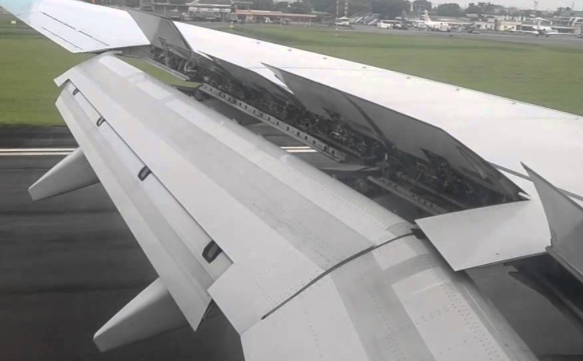Flaps
Flaps Flaps increase lift and drag by changing the camber of the airfoil, which increases the maximum lift coefficient.
This allows the aircraft to fly at a lower air speed without stalling. Increased lift means increased lift-induced drag, and when extended, the flaps themselves also create parasite drag. Therefore, flaps can be used to allow the plane to fly at a lower speed (lift effect) and/or help slow the airplane down (drag effect).
On Takeoff
Only a small amount of flap is typically used for takeoff, usually no more than 5°. The purpose of takeoff flaps is typically to shorten the takeoff roll without increasing drag, so less flap is desired.
On landing
Full or close to full flaps is typically used (typically between 30° and 40°). They lower the stall speed and increase the angle of descent. This reduces the landing roll and reduces wear on the wheel brakes. The pilot will also have better visibility due to the lower nose position caused by the aft C of P. Flap angle differs for every manufacturer and type of aircraft.
Boeing generally measures it in degrees, so you have flaps 0°, 1°, 2°, 5°, 10°, 15°, 25°, 30°, 40° for 737s, but for the newer “7s” their flaps are simpler: 0°, 1°, 5°, 15°, 20°, 25°, 30°.
Airbus uses a different system, with flaps being measured in stages, so you have stage UP, stage 1, stage 1+F, stage 2, stage 3 and stage FULL. A cessna 172 only has flaps 0°, 10°, 20° and 30°. Others like the Mooney and Beechcraft have an even simpler flaps system: flaps UP, flaps APPROACH, and flaps LANDING.

